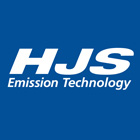Technology is the science which directs the processing of raw materials or knowledge of the crafts, the production processes and the technical products. With reference to the function of products and production processes, this is our basis for sustainable new and continued development of our HJS products:
SMF®: From the analysis of the market demand for a rugged, full-flow particle filter with high ash-storage capability, we have developed a completely new filtering
material, including the corresponding manufacturing processes. The patented Jetfilter® design supports these special characteristics. Based on scientific know-how of particle filtration, we could develop a partial flow filter of which approx. 1 million are already in use world-wide.
SMF®-AR: For application-neutral employment of SMF®, the requirement for a corresponding regeneration process has been determined. For this, we use an additive-supported, thermo-electrical, regeneration process, including ECU control unit, developed by HJS. This system, protected world-wide according to patent law, has for example a market share of approx. 70% in construction machines in Switzerland.
SMF® Beschichtung: We solve the requirement on a regeneration-supporting coating for the sintered metal filter using an individual, nano-scale coating technology, not otherwise used with particle filters. This is in series application with MAN Truck and Bus, as well as in Volkswagens drive system in two different variants. Our own coating technical facility with synthetic gas test bench ensures continuous further development.
CB²: The ever lower trending exhaust gas temperatures of modern diesel engines place increasingly higher requirements on the exhaust gas treatment systems. Active thermo-management can offer a significant contribution here to an emission and fuel consumption-efficient exhaust gas treatment. Whether it is engine-internal or an autonomous solution with the CB² technology, a catalytic burner without flame and additional air supply. The regulation of such a thermo-management system can also be realised over our ACU HJS control unit.
SCRT®: As well as soot particles, nitrogen oxides are a significant element of the regularised emissions of diesel engines in all areas of application. SCR catalyzers are used in order to decrease these emissions (NOx = NO + NO2), with application of a reducing agent (AdBlue® or DEF). SCR stands for Selective Catalytic Reduction. At HJS we have already begun with the development of this technology in the middle of the 1990s. For the reduction of the gaseous pollutants, in combination with a diesel particle filter, HJS, jointly with the project partners Daimler and Johnson Matthey, has developed the SCRT® system (Selective Catalytic Reduction + Trap) With this modular structured system, particles and nitrogen oxides are almost completely removed from the diesel exhaust gases.
The SCRT® technology has established itself in past years as the standard for diesel vehicles, which actually concerns clean exhaust gases.
SCRT®TM with active thermo-management Modern city buses offer a maximum of exhaust gas cleaning through the combined employment of particle filter and SCR technology. However, buses in inner city transport frequently do not reach the temperature required for an optimum functioning of the SCR catalyzer. The vehicle manufacturers meet the high requirements of emission standard Euro VI primarily through the employment of engine thermo-management (TM). HJS transfers this concept, as an autonomous system architecture, to the retrofit of existing vehicles. Thus HJS ensures, for example through active thermo-management over two networked actuators, that the systems offer best-possible reduction even at low load, in stop & go driving and at standstill, under all ambient conditions – without having any influence on the engine in this case. The HJS SCRT ® TM system with active thermo-management also reduces health-endangering nitrogen oxide emissions of diesel engines by more than 90% even in demanding real-life operation.
 Go to HJS UK
Go to HJS UK


